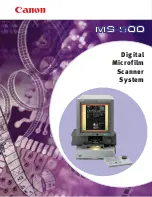
42
Trunking Setup
43
Trunking Setup
6.
Use the number and decimal point keys to enter the Talk Group
ID:
For ED Talk Group IDs, you can enter either a decimal or AFS
code. The default setting is decimal ID entry.
To use the AFS code, press
FUNC
then
2,
“AFS Format”
appears for about 2 seconds. You can then enter the AFS code.
7.
Press
ENT.
Notes:
•
If you make a mistake,
“Invalid ID value”
appears when you
press
ENT.
Go back to Step 3.
•
If you entered an ID that is already stored in same bank,
“Dupl.
ID of X-XX appears.”
To store the ID code, press
ENT.
To
cancel, press
CLEAR
.
•
For information about adding text tags to a Talk Group ID, see
“Text Tags”
on Page 47.
Deleting Talk Group IDs
You can delete an individual Talk Group ID or all Talk Group IDs in a
bank.
To delete a Talk Group ID:
1.
Press
PROG
then
TRUNK.
2.
Press
FUNC,
S
or
T
to select ID memory.
3.
Press
FUNC
then
CLEAR.
To delete ALL talk group IDs in a bank:
1.
Press
PROG.
2.
Press
TRUNK
to enter a Talk Group ID memory mode.
3.
Select a Talk Group ID bank using
FUNC,
S
or
T
.
4.
Press
FUNC
then
6.
“Clear entire list? Press 1 to
clear all, any other key aborts”
appears.
5.
To clear the Talk Group IDs, Press
1.
To cancel the deletion,
press any key except
1.
Saving Trunking Channels
Trunking channels are defined using the same procedure for
non-trunking channels. In each bank, you can mix channel modes,
including conventional, but you can scan only one trunking mode at
a time, either EDACS, Motorola, or LTR.
Because Motorola control frequencies change daily, you should
save all the control frequencies in the same bank. If you do not
know the control frequency, save all the Motorola frequencies in the
same bank.
EDACS frequencies are assigned Logical Channel Numbers (LCN)
and organized in a specific order. To scan correctly, you must
program the frequencies in LCN order, starting with Memory 01.
Notes:
•
Trunked modes (MO, ED, and LT) can only be selected for
frequencies above 137 MHz that use trunking operations.
•
For information about adding text tags to a channel, see
“Text
Tags”
on Page 47.
















































